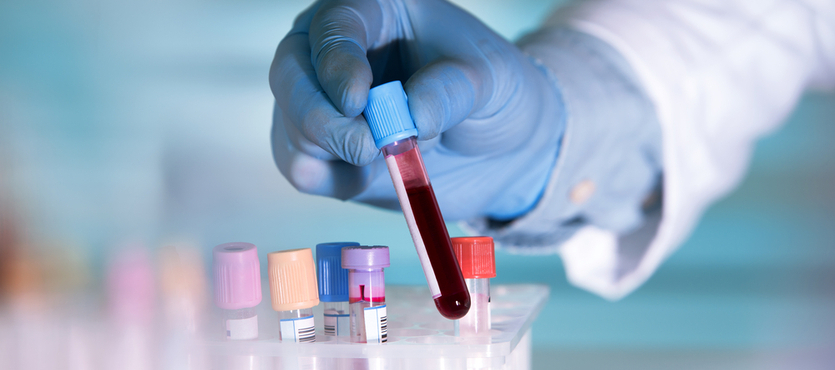In a potentially significant development for private military contractors who sustain Traumatic Brain Injuries (TBIs) in Afghanistan and elsewhere, the Food and Drug Administration issued final approval for a diagnosis system that uses a blood sample.
Banyan Biomarkers developed a test which measures blood protein levels that are associated with “brain bleeding” and other head injuries. Doctors must draw blood within 12 hours. If the test is positive, a CT scan or MRI can confirm the diagnosis. The company developed the test in conjunction with the Department of Defense, so private overseas contractors may feel the impact earlier than stateside victims. The FDA is reviewing other diagnosis options as well, so Banyan Biomarkers may have substantial competition in the near future.
Agency Commissioner Dr. Scott Gottlieb said the test “sets the stage for a more modernized standard of care for testing of suspected cases.”
Combat-Related Brain Injuries
Many people associate TBIs with head wounds from small arms fire, knockdowns from an adjacent IED, and other such events. The physical force is not what causes a brain injury. Rather, scientists believe that the shock waves that explosive blasts generate disrupt brain functions. The closer the proximity, the more severe the injury.
So, front-line troops are not the only ones who are vulnerable. A blast from a large IED can sometimes be felt for several miles, suicide bombers sometimes attack rear-area buildings, and so on. Private military contractors frequently staff these rear areas, performing escort and other duties. As a result, they are highly at risk for TBIs.
Due to the frequency of these injuries, many practitioners call them the “signature wounds” of the Iraq and Afghanistan Wars. Despite their high numbers, diagnosis issues remain.
Brain Injury Diagnosis Issues
As mentioned earlier, TBI victims may not sustain a traditional combat injury. Additionally, TBI symptoms vary among victims. Some experience complete unconsciousness and some are dazed but awake. Furthermore, not everyone vomits; some only get nauseated.
The brain itself may be the most significant impediment to proper diagnosis. Many victims honestly insist that they “feel fine” because the brain is very good at hiding its own symptoms. Furthermore, many victims do not want to let down their comrades. So, they want to get back into action as soon as possible, even if that means lying on diagnostic tests.
So, many doctors miss the initial diagnosis phase. The second phase is hard to detect as well. In the days and hours following a TBI, many victims experience:
- Tinnitus (ringing in the ears),
- Personality changes, such as irritability,
- Chronic headaches, and
- Sleeplessness.
These symptoms are not unique to TBIs. As a result, many doctors misdiagnose a brain injury as stress or shock.
A blood test could take care of these issues. Rather than relying on self-reported symptoms or cognitive tests that are not always reliable, a doctor could use an objective blood test that’s accurate and easy to interpret.
Brain Injury Treatment Issues
TBI difficulties extend to the treatment phase. One day soon, doctors may be able to use stem cells and other emerging treatments to actually cure brain injuries. But for now, and for the foreseeable future, these injuries are always permanent. Dead brain cells do not regenerate.
Surgery sometimes helps, but typically, the only treatment is advanced physical therapy. Such an approach can teach other, non-injured brain areas to assume the lost functions. The latest research indicates that long-term physical therapy is the best treatment protocol. Otherwise, many victims lose bodily functions. They have trouble walking, speaking, and performing other everyday tasks.
It is hard to get insurance companies to pay for long-term physical therapy, mostly because of the nature of this approach. Progress is not always a straight line. Sometimes, the patient may tread water for several weeks or months and then achieve a breakthrough. When progress stalls, insurance companies are often quick to claim that the victim has reached Maximum Medical Improvement. They, then pull the plug on funding.
An assertive attorney is critical at this stage. An attorney can partner with doctors and other experts who press the need for continued physical therapy. So, victims get the treatment they need instead of what the stingy insurance company will readily pay for.
Even if physical therapy is successful, the injured victim may still require a wide array of medical devices, along with modifications to a house or apartment. These modifications can be very expensive. Fortunately, Defense Base Act compensation is available for all relevant medical expenses, as outlined below.
DBA Benefits Available
While they attend physical therapy, most victims cannot work. The therapy is exhausting and time-consuming. Moreover, victims may not be healthy enough to return to work, especially in the early stages. Unpaid bills often pile up during periods of unemployment, adding additional stress to an already stressful situation.
So, in most cases, the Defense Base Act pays two-thirds of a victim’s average weekly wage during a temporary disability period. The AWW is sometimes difficult to calculate because of the hours worked, bonuses, and non-cash compensation, such as housing allowance or per diem allowances.
If the victim is permanently disabled, the DBA also provides compensation for lost wages for the victim’s life in these situations.
In most cases, the DBA insurance company pays medical bills directly. Moreover, victims are not financially responsible for any unpaid charges. If the insurance company initially denies payment, as is often the case, an attorney negotiates with the provider for delayed payment. These medical bills include not only emergency care, but also follow-up visits, physical therapy, medical devices, and any other related expenses which are medically necessary.
Reach out to Barnett, Lerner, Karsen & Frankel, P.A. for more information about Defense Base Act claims procedure.

